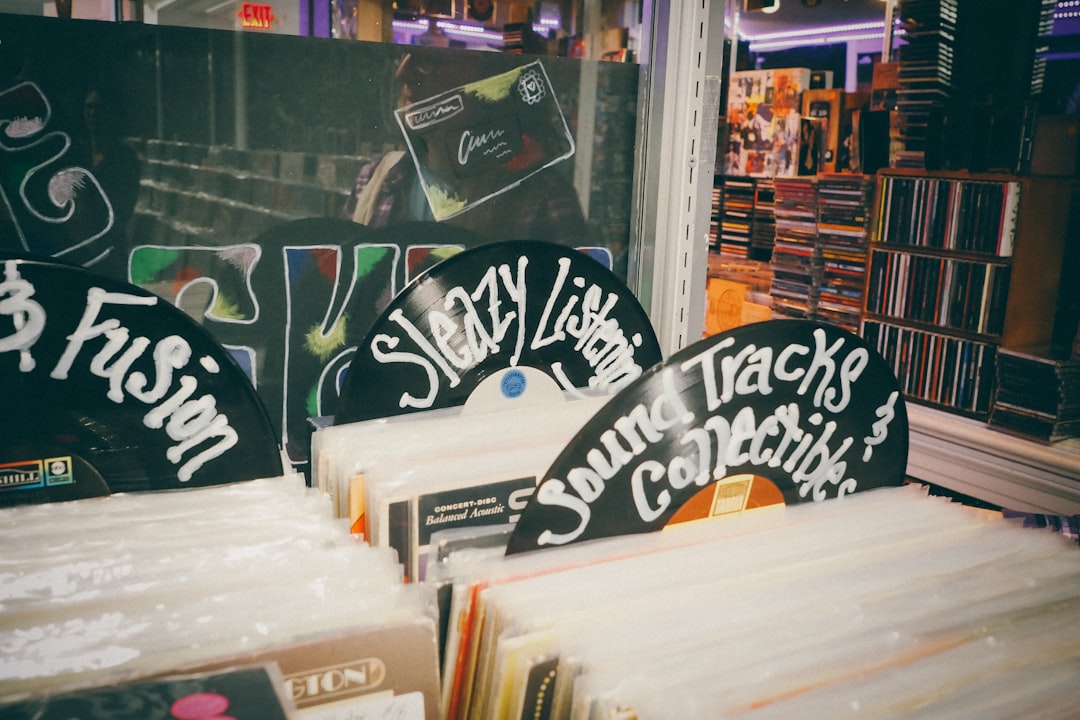Live performance anxiety, often referred to as stage fright, is a common experience that many individuals face when they are required to perform in front of an audience. This phenomenon can stem from various sources, including fear of judgment, perfectionism, and past negative experiences. At its core, performance anxiety is rooted in the fear of failure and the desire for acceptance.
For many performers, the pressure to meet their own expectations or those of others can create a paralyzing sense of dread that overshadows their passion for the art. The psychological underpinnings of performance anxiety can be complex. It often involves a heightened sense of self-awareness and an acute sensitivity to how one is perceived by others.
This can lead to a vicious cycle where the fear of making mistakes or being criticized exacerbates the anxiety, making it even more challenging to perform. Understanding these roots is crucial for performers, as it allows them to confront their fears and develop strategies to manage their anxiety effectively.
Key Takeaways
- Understanding the root of live performance anxiety
- Acknowledge the underlying causes of performance anxiety, such as fear of failure, perfectionism, and past negative experiences.
- Recognizing the physical and emotional symptoms of performance anxiety
- Be aware of symptoms like rapid heartbeat, sweating, trembling, and negative thoughts, which can indicate performance anxiety.
- Preparing for a successful live performance: strategies for rehearsal and preparation
- Implement effective rehearsal techniques, such as visualization, mental practice, and consistent preparation, to build confidence and reduce anxiety.
- Utilizing relaxation and mindfulness techniques to manage performance anxiety
- Practice relaxation techniques like deep breathing, meditation, and progressive muscle relaxation to calm the mind and body before performances.
- Harnessing the power of positive self-talk and visualization
- Use positive affirmations, visualization, and mental imagery to reframe negative thoughts and build confidence in performance situations.
Recognizing the physical and emotional symptoms of performance anxiety
Physical Symptoms
Physically, performance anxiety can cause symptoms such as rapid heartbeat, sweating, trembling, dry mouth, and even nausea. These physiological responses are part of the body’s natural fight-or-flight reaction, triggered by the perceived threat of performing in front of an audience.
Emotional Symptoms
Emotionally, performance anxiety can lead to feelings of dread, panic, and self-doubt. Many performers may find themselves ruminating on potential failures or catastrophizing the consequences of a poor performance.
Overcoming Performance Anxiety
This emotional turmoil can create a barrier to effective performance, as it distracts from the joy and creativity that should accompany artistic expression. By acknowledging both the physical and emotional symptoms of performance anxiety, individuals can begin to develop coping mechanisms that address these challenges head-on.
Preparing for a successful live performance: strategies for rehearsal and preparation
Preparation is key to alleviating performance anxiety. A well-structured rehearsal process can instill confidence and familiarity with the material, reducing the likelihood of anxiety during the actual performance. Performers should consider breaking down their practice into manageable segments, focusing on specific sections of their work until they feel comfortable with each part.
This method not only enhances skill but also builds a sense of accomplishment that can counteract feelings of inadequacy. Additionally, incorporating mock performances into the rehearsal process can be incredibly beneficial. By simulating the live performance environment, individuals can acclimate themselves to the pressures they will face on stage.
Inviting friends or family to act as an audience during these practice sessions can provide valuable feedback while also helping to desensitize performers to the experience of being watched. This gradual exposure can significantly reduce anxiety levels when it comes time for the actual performance.
Utilizing relaxation and mindfulness techniques to manage performance anxiety
| Technique | Effectiveness | Notes |
|---|---|---|
| Deep Breathing | High | Helps to calm the nervous system |
| Mindfulness Meditation | Medium | Increases awareness and reduces stress |
| Progressive Muscle Relaxation | High | Reduces physical tension and anxiety |
| Visualization | Medium | Helps to create a positive mindset |
Incorporating relaxation and mindfulness techniques into a performer’s routine can be instrumental in managing performance anxiety. Techniques such as deep breathing exercises, progressive muscle relaxation, and meditation can help calm the mind and body before taking the stage. Deep breathing, in particular, allows individuals to focus on their breath, which can slow down their heart rate and reduce feelings of panic.
Mindfulness practices encourage performers to stay present in the moment rather than getting lost in anxious thoughts about what could go wrong. By training the mind to focus on the here and now, individuals can cultivate a sense of calm that enhances their overall performance experience. Regular practice of these techniques not only prepares performers for live situations but also contributes to their overall mental well-being.
Harnessing the power of positive self-talk and visualization
Positive self-talk is a powerful tool that performers can use to combat negative thoughts associated with performance anxiety. By consciously replacing self-doubt with affirmations and encouraging statements, individuals can shift their mindset from one of fear to one of confidence. For instance, instead of thinking, “I will mess up,” a performer might tell themselves, “I am prepared and capable.” This shift in internal dialogue can significantly impact how one approaches a live performance.
By mentally rehearsing a successful performance, individuals can create a vivid image of themselves confidently engaging with their audience. This practice not only helps to reinforce positive beliefs but also allows performers to familiarize themselves with success scenarios, making them feel more attainable when faced with real-life situations.
Together, positive self-talk and visualization create a robust framework for overcoming performance anxiety.
Seeking professional help: therapy and counseling for performance anxiety
For some individuals, performance anxiety may be so overwhelming that it interferes with their ability to perform altogether. In such cases, seeking professional help through therapy or counseling can be a vital step toward recovery. Mental health professionals can provide tailored strategies and coping mechanisms that address the specific fears and anxieties faced by performers.
Cognitive-behavioral therapy (CBT), for example, has been shown to be particularly effective in treating anxiety disorders by helping individuals reframe negative thought patterns. Therapists may also introduce exposure therapy techniques that gradually expose individuals to their fears in a controlled environment. This approach allows performers to confront their anxieties in a safe space while developing resilience over time.
By working with a professional, individuals can gain insights into their anxiety triggers and learn how to manage them more effectively, ultimately leading to improved performance outcomes.
Exploring the benefits of beta-blockers and other medications for performance anxiety
In some cases, individuals may consider medication as a means to manage performance anxiety. Beta-blockers are commonly prescribed for this purpose as they work by blocking the effects of adrenaline on the body. This can help reduce physical symptoms such as rapid heartbeat and trembling during performances.
While beta-blockers do not address the psychological aspects of anxiety directly, they can provide temporary relief from debilitating physical symptoms. It is essential for individuals considering medication to consult with a healthcare professional who can assess their specific needs and determine whether this approach is appropriate. Medications should be viewed as one component of a comprehensive strategy for managing performance anxiety rather than a standalone solution.
When combined with therapeutic techniques and self-help strategies, medication can enhance an individual’s ability to perform confidently.
Building confidence through exposure therapy and gradual desensitization
Exposure therapy is a well-established method for overcoming various forms of anxiety, including performance-related fears. This technique involves gradually exposing individuals to their sources of anxiety in a controlled manner until they become desensitized to them. For performers, this might mean starting with small gatherings before progressing to larger audiences or more significant performances over time.
The process of gradual desensitization allows individuals to build confidence incrementally. Each successful experience reinforces their ability to cope with anxiety-inducing situations, creating a positive feedback loop that encourages further exposure. As performers become more accustomed to performing in front of others, they often find that their anxiety diminishes significantly, allowing them to focus more on their craft rather than their fears.
Embracing the power of support systems and community in overcoming performance anxiety
Support systems play a crucial role in helping individuals navigate performance anxiety. Friends, family members, mentors, and fellow performers can provide encouragement and understanding during challenging times.
Participating in community groups or workshops focused on performance skills can also be beneficial. These environments allow individuals to practice their craft while receiving constructive feedback from peers who understand the pressures involved in live performances. The shared experience of overcoming challenges together creates a supportive atmosphere that empowers individuals to confront their anxieties head-on.
Navigating performance anxiety in the moment: coping strategies during live performances
When faced with performance anxiety in real-time during a live event, having coping strategies readily available is essential for performers. One effective technique is grounding exercises that help individuals reconnect with their surroundings and regain focus. This might involve taking a moment to observe specific details in the environment or focusing on physical sensations such as the feel of an instrument or the texture of clothing.
Another strategy is employing breathing techniques during moments of heightened anxiety on stage. Taking slow, deliberate breaths can help calm racing thoughts and reduce physical symptoms associated with panic. Additionally, reminding oneself that it is normal to feel anxious before performing can help normalize the experience and reduce pressure.
Sustaining long-term success: maintaining a healthy mindset and managing performance anxiety over time
Sustaining long-term success in managing performance anxiety requires ongoing effort and self-awareness. Individuals should regularly assess their mental health and be proactive about addressing any emerging anxieties or stressors related to performing. Engaging in continuous learning about coping strategies and seeking support when needed are vital components of maintaining a healthy mindset.
Moreover, celebrating small victories along the way reinforces positive behaviors and encourages resilience against future challenges. By acknowledging progress—no matter how minor—performers can cultivate a sense of accomplishment that fuels their passion for their craft while simultaneously managing performance anxiety effectively over time. Ultimately, embracing this journey allows individuals not only to thrive as performers but also to enjoy the art they love without being hindered by fear.
FAQs
What is live performance anxiety?
Live performance anxiety, also known as stage fright, is the feeling of nervousness or fear that arises before or during a live performance, such as a music concert, theater production, or public speaking event.
What are some common symptoms of live performance anxiety?
Common symptoms of live performance anxiety may include rapid heartbeat, sweating, trembling, dry mouth, nausea, and a feeling of dread or panic.
What are some solutions for live performance anxiety?
Some solutions for live performance anxiety may include deep breathing exercises, visualization techniques, positive self-talk, seeking support from friends or a therapist, and gradually exposing oneself to performance situations.
Are there any medications or supplements that can help with live performance anxiety?
Some individuals may find relief from live performance anxiety through the use of medications or supplements, such as beta-blockers or natural remedies like valerian root or chamomile. However, it is important to consult with a healthcare professional before using any medication or supplement.
How can I prepare for a live performance to reduce anxiety?
To prepare for a live performance and reduce anxiety, it can be helpful to practice regularly, visualize success, familiarize oneself with the performance venue, and develop a pre-performance routine that includes relaxation techniques.





